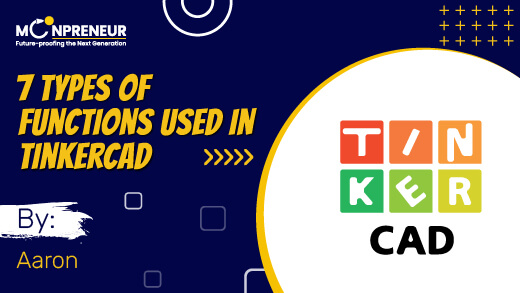MoonCampaign by Aaron (10 years)

Our Social Impact - We're transforming education globally with free robotics and math workshops in the US, UK,
Canada, and Australia.
Our workshops have helped 66,000 students alone in the US plus 14,000 students benefit from our four-week sessions.
7 Types of Functions Used in Tinkercad
Aaron
Show n Tell
Show n Tell
Coming Soon
Aaron's project "Exploring Tinkercad for Circuit Design" highlights his discovery of seven key functions that make Tinkercad a powerful tool for designing and simulating circuits. These functions include toggling digital pins, reading analog inputs, creating loops, and using conditional programming like if-else statements. Aaron also explored pulse-width modulation (PWM) for controlling LED brightness and motor speeds. Tinkercad allowed him to experiment with virtual circuits, fostering his creativity and understanding of electronics without the need for physical components. He hopes to inspire other young learners to explore the exciting world of circuit design and programming through Tinkercad.
Tinkercad is an incredible tool for designing and simulating circuits, and as I explored its features, I discovered seven types of functions that make it powerful and fun. These functions help users like me understand how to combine components and programming to create virtual circuits that mimic real-world behavior.
Some key functions include toggling digital pins to turn LEDs on and off, using analog inputs to read sensor data, and simulating delays to control timing in circuits. I also explored how to create loops for repetitive actions and condition-based functions like if-else statements to control component behavior based on inputs. Simulating pulse-width modulation (PWM) was another exciting feature, allowing me to dim LEDs and control motor speeds.
Learning these functions in Tinkercad opened up endless possibilities for creative projects, from basic LED circuits to more advanced designs like motorized systems or interactive sensors. This tool made it easy to experiment without needing physical components, and it’s perfect for kids like me who are curious about electronics. I hope to inspire others my age to start exploring Tinkercad and discover the fun of building circuits and programming!
©️ Copyright, Moonpreneur Inc.
3031 Tisch Way, 110 Plaza West PMB # 138, San Jose, CA 95128, USA
Likes
Rating
62 days left
7 Types of Functions Used in Tinkercad